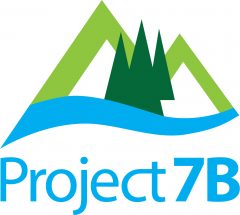While the rights of private property are sacredly guarded, we must not forget that the community also have rights, and that the happiness and well being of every citizen depends on their faithful preservation.
Chief Justice Roger Taney, Charles River Bridge v. Warren Bridge (1837)
What is a Zoning Code?
Zoning codes usually follow the comprehensive land use plan, and are the rules that carry out the intent, the goals and objectives of the land use plan. Zoning ordinances can be thought of as regulations with a map, intended to accomplish two basic goals:
- Balance community rights and private property rights.
- Separate land uses that are considered incompatible, such as a lumber mill and a kindergarten.
More specifically, zoning ordinances are legal guides whose regulations and laws inform landowners, developers, citizens, and authorities how land in specific geographic areas (“zones”) can be used. They indicate the type or types of activity allowed in those zones, such as residential, commercial, agricultural, industrial or mixed-use, and may also regulate lot size, placement of structures within a lot, the bulk (or density) of those structures, and their height. Zoning codes may also address levels of gas emissions, light radiation, noise, water, and solid waste discharges, and onsite or pre-disposal treatment of pollutants.
A Brief History of Zoning in the US
Urban land-use zoning as we know it was first implemented in the US in New York City in 1916 to address concerns that skyscrapers would block residents’ access to sunlight and fresh air. Twenty years later, zoning had spread to more than 1,300 cities, and today it is common across the nation. Zoning regulations are considered to be a legitimate expression of the police power to protect community health, safety, and welfare, drawing upon the maxim that “a man shall not use his property so as to harm another.”
Zoning Benefits and Pitfalls
Benefits
- Zoning addresses the fact that communities, just as individuals, have property rights. This is important because property impacts rarely end at property lines. Poor water quality on your neighbor’s property will likely mean poor water quality for you, too.
- Zoning can improve the predictability of land uses, which in turn can stabilize land values and/or the local real estate market.
- Zoning can guard against Inefficient use of public resources that can drain public coffers and waste taxpayer money.
- Zoning can provide public goods, such as public parks or open space.
- Zoning can help ensure that jurisdictions produce a fiscal surplus for the provision of public services. They do this by encouraging and allowing for neighborhoods that have a healthy balance of high-, medium-, and low-tax revenue properties.
Pitfalls
- Zoning, by its very definition, places restrictions on individuals’ use of their private property.
- Just as zoning can be used to create a more diverse community, it can and has been used historically to exclude those from different racial, economic, and ethnic backgrounds.
- Zoning that completely separates land uses increases the length of time people spend traveling between the different zones, such as from a residential area to a retail area for work.
- Separation of land uses also results in environments that are “dead” during parts of the day. An office park, for example, is rarely used in the evening.
- Zoning is a rather blunt policy for pollution control because, rather than limit pollution itself, it only limits where one may pollute. Polluters could simply decide to move outside of a zoned area to avoid regulation.
- Zoning strategies such as urban growth boundaries and limits on building permits disrupt real estate markets. Urban growth boundaries, for example, increase home and land values within the boundary and decrease values outside of it. These imbalances must be corrected with additional land use and development policies.
